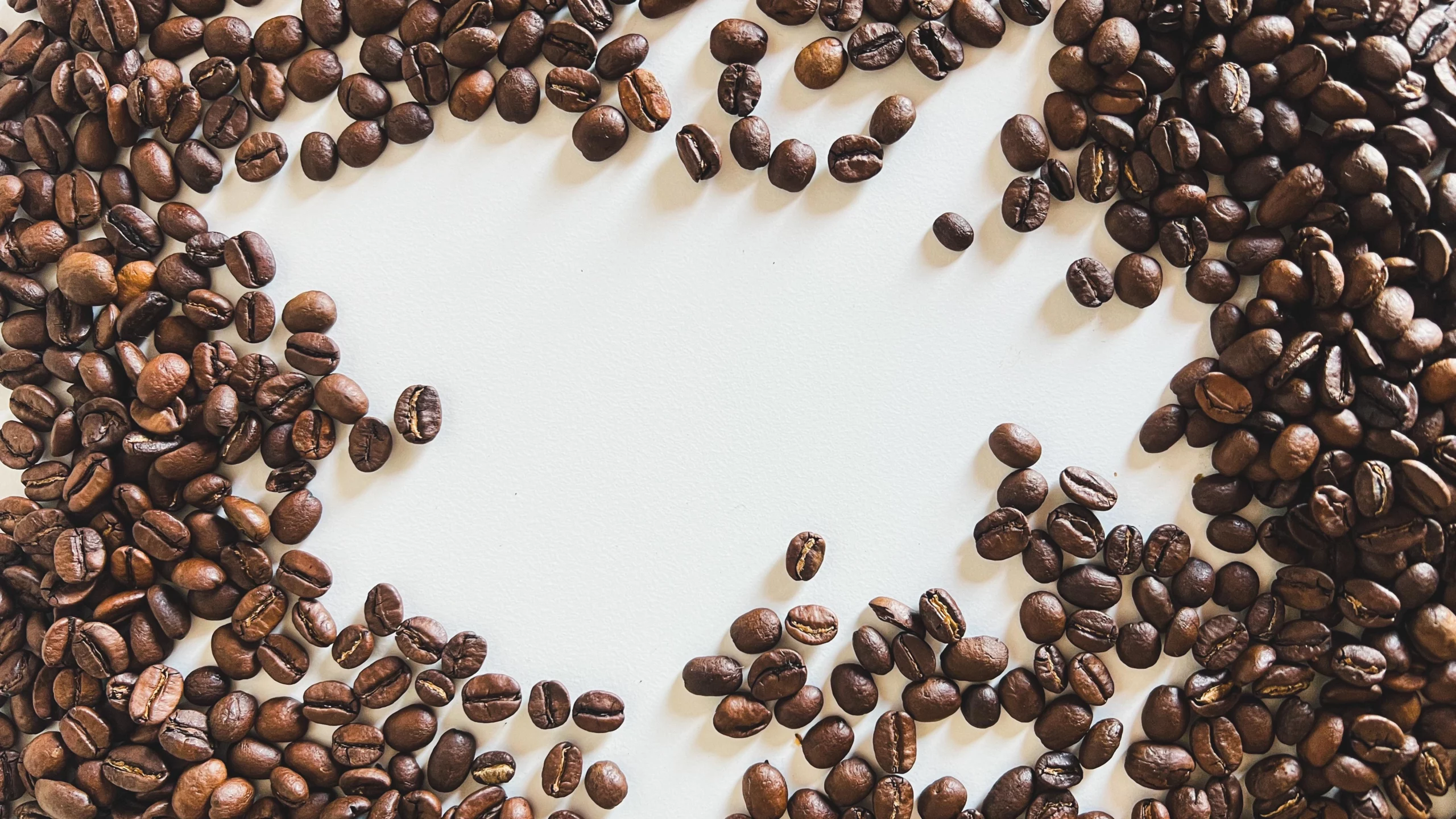If you’ve ever wondered about the difference between arabica vs robusta coffee beans, you’re not alone. But what exactly sets these types of coffee beans apart?
In this blog, you’ll discover the key differences between arabica, robusta and 2 other, less-known, types of coffee beans.
Table of Contents
Types of coffee beans
Arabica and robusta are the two most well-known types of coffee beans in the world. But what exactly makes them so popular and how do they differ from each other?
Let’s break down the key differences between arabica vs robusta.
Together, these 2 types of coffee beans make up more than 99% of global coffee production. And yet, their characteristics couldn’t be more different.
Types of coffee beans:
Arabica = smooth, refined, and aromatic
Robusta = bold, bitter, and strong
But it’s not just about flavor. Arabica and robusta thrive in very different climates and conditions.
Arabica grows best at high altitudes in cool, humid environments. Robusta plants prefer lower, warmer regions with more stable weather.
Caffeine levels also vary greatly: robusta contains nearly twice as much caffeine as arabica, which gives it that extra punch.
Then there’s the price. Arabica beans are often more expensive because the plant is more delicate and yields less crop.
To help you compare arabica vs robusta at a glance, we’ve listed their key traits below
Characteristic | Arabica | Robusta |
Flavour | Mild | Bitter |
Caffeïne | Less | More |
Elevation | High | Low |
Price | Expensive | Cheaper |
Crema | Thin | Syrupy |
What is Arabica coffee?
Coffea Arabica, as the plant is officially called, is the oldest and most beloved coffee bean variety.
Arabica plants grow and thrive high up in the mountains, at altitudes between 800 and 2,000 meters above sea level. Think of the steep hills of Colombia, the volcanic soils of Ethiopia, or the highlands of Guatemala.
The environment in which Arabica coffee grows has a big impact on the flavor of the beans.
Here’s why: cooler temperatures and plenty of shade cause the beans to ripen more slowly. And it’s this slow ripening process that gives Arabica beans their complex flavor.
Taste profile of Arabica beans
Arabica is known for:
A smooth, balanced flavor
Notes of fruit, florals, and sometimes chocolate
A mild, pleasant acidity
A lighter body
On average, Arabica beans contain 1.2% to 1.5% caffeine. That’s relatively low compared to robusta, which can contain up to 2.7% caffeine per bean.
Thanks to that lower caffeine content, arabica tastes softer and less bitter. An added bonus: arabica is generally gentler on your stomach, especially if you’re sensitive to caffeine or prone to experiencing a sharp or acidic aftertaste.
Did you know?
- Arabica accounts for approximately 60–70% of all coffee production worldwide.
- The plant was already being cultivated in Yemen as early as the 7th century.
- The arabica bean is oval-shaped and has an S-shaped groove.
What is Robusta coffee?
Coffea Canephora, also known as Robusta, is the literal and figurative robust counterpart to Arabica.
The plant grows at lower altitudes, between 0 and 800 meters, and is much more resistant to heat, humidity, and plant diseases.
Flavour profile of Robusta beans
Robusta has a bold flavor profile:
- Strong and intense
- Often more earthy and bitter
- Lower acidity
- A heavy body
Robusta beans contain 2–2.7% caffeine per bean. That’s significantly higher than in Arabica beans, and you can definitely taste the difference.
Robusta beans have a sharper taste. This makes them especially popular in espresso blends: they add a thick, rich crema and a solid kick.
Perfect if you’re in need of an extra energy boost.
Did you know?
- Robusta originates from Africa (Congo, Uganda).
- Robusta beans are round and have a straight groove.
- In Italy, many espressos are blended with Robusta for an extra kick.
Arabica vs robusta
| Preference | Arabica | Robusta |
| Subtle flavour | ✓ | |
| Powerful flavour | ✓ | |
| Light coffee | ✓ | |
| Strong coffee | ✓ | |
| Less cafeïne | ✓ | |
| More cafeïne | ✓ |
Arabica has a smooth, subtle flavor, but contains less caffeine and has a lighter body.
Robusta, on the other hand, is bolder and more full-bodied, with higher caffeine content, though it can sometimes taste a bit bitter or harsh.
That’s why many coffee brands go for blends: a mix of both types of coffee beans. This way, you get the best of both worlds, the gentle notes of Arabica and the strong body of Robusta.
Most specialty coffee consists of 100% Arabica beans.
Tip: Take a look at our specialty coffee category. You’ll find four different types of 100% Arabica coffee beans that we’re currently obsessed with.
Need help finding your perfect beans? Read more here about how to choose the best coffee beans.
Other types of coffee beans
Did you know that besides Arabica and Robusta beans, there are a few other types of coffee beans?
Two varieties you might have heard of are Liberica and Excelsa coffee beans.
Liberica coffee beans
These beans have a fruity character with lots of depth. The Liberica plant thrives in hot climates at low altitudes.
Liberica beans are rare, which makes them quite hard to find.
Excelsa coffee beans
These have a unique flavor profile that’s the opposite of Liberica: bolder, with tangy notes of dark, fruity flavors.
Although Excelsa beans are classified as a type of Liberica, their taste and experience are completely different.
Interestingly, the Excelsa coffee bean grows on a tree rather than a shrub, unlike most types of coffee beans.
A fun one to try if you’re looking to explore new flavor experiences and expand your coffee repertoire.





 No products in the cart.
No products in the cart.